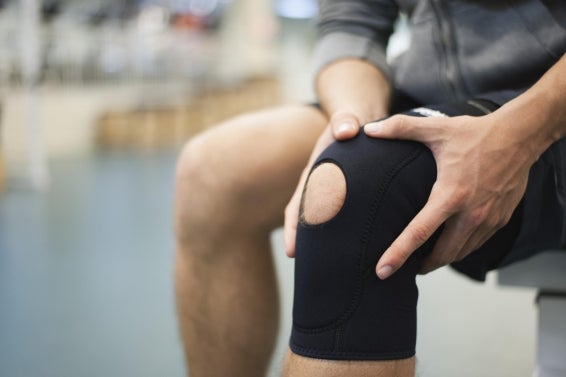View Providers
Knee replacement is a surgical procedure that replaces a damaged knee with an artificial joint, called a prothesis.
This surgery is most commonly offered to people ages 60 to 80.
Common Reasons for Knee Replacement Surgery
Osteoarthritis, a joint disease that causes joint cartilage and adjacent bone to break down, is the most common reason for knee replacement surgery. It affects mostly middle-aged and older adults. Other forms of arthritis, such as rheumatoid arthritis and arthritis that results from a knee injury, can also lead to deterioration in the knee joint. Fractures, torn cartilage, and/or torn ligaments can also cause irreversible damage to the knee joint over the years.
The Surgical Consultation
An orthopedic specialist will help you decide whether knee replacement surgery is the best option for you. Your doctor may first recommend alternative treatments, including assistive walking devices and anti-inflammatory medications. If these don’t help relieve your pain, your doctor may recommend surgery.
Artificial Knee Joints
The artificial knee is made up three components. The tibial component replaces the top of the shin bone. The femoral component replaces part of the thighbone. The patellar component replaces the bottom surface of the kneecap that rubs against the thighbone.
The two most common types of artificial knee joints used in replacement surgery are cemented prostheses and uncemented prostheses. Sometimes, a combination of the two types is used. A knee prosthesis is made up of metal and plastic. A cemented prosthesis is attached to the bone with a type of surgical cement. An uncemented prosthesis attaches to the bone with a fine mesh of holes. The remaining bone grows around the prosthesis and attaches naturally during the healing process.
Before Surgery
If it is recommended, your doctor will review your medical history and perform a complete physical examination, including X-rays, to ensure you are in good health before undergoing surgery. You may also meet with a physical therapist to discuss rehabilitation after the surgery.
During Surgery
Although each procedure varies, surgery to replace a knee usually lasts about two hours. After the knee’s damaged bone and cartilage is removed, the surgeon will implant the new artificial knee.
After Surgery
Knee replacement surgeries usually require you to stay in the hospital for several days. While in the hospital, you’ll usually begin physical therapy exercises to start regaining range of motion in your knee. Physical therapy will continue at home.
Most people see outstanding results after knee replacement surgery. It relieves pain for most, and the majority of patients can walk on their own after they fully recover. Most artificial knee joints last 10 to 15 years. Some can last as long as 20 years.





